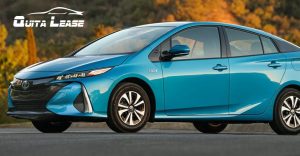The auto industry is being modified at an unmatched pace. It has become volatile due to global market trends and technology. These trends are multiplying further to make the competition harder. Some of the trends are inevitable given the technological developments but others can be disruptive. Uber is an example as it has transformed the transportation sector.
So what provocative trends we should look for coming 2018?
Driverless Cars (Autonomous Vehicles):
Autonomous vehicles will continue to make incremental progress in 2018. Though it was first started by Tesla many companies have now jumped on this bandwagon of driverless cars. This technology still may take years to become fully functional. But some cars have already started integrating the second-level autonomous technology such as rear park assist and adaptive cruise control.
Tesla, Google, Ford, Apple and many other companies are in the testing phase of their driverless cars. But this technology is not economical and only a meager percentage of drivers are aware of the available technology. So before it takes some years to develop, you can expect some semi-autonomous features in the new car models. But driverless vehicles have legal, regulatory and psychological hurdles to overcome before coming on the roads.
AI and Augmented Reality in Cars
Cars will be the new test and launch platform for apps and innovations in 2018. This innovation will include wireless locking and syncing, shared memory, smarter navigation, personalization, home/car connections and new entertainment features. The Augmented reality will shape the driver safety and impact areas from designing to repairing a car. Unlike the virtual reality that creates a simulated world, the augmented reality adds specific and created elements to the real world via technological innovation. Augmented reality may also change the prototyping in the automotive sector.
AI-based systems will rapidly become the standard in cars. It will transform the human-machine interface including gesture recognition, speech recognition, eye tracking, virtual assistance and driver monitoring. AI will also help increase the driving safety by driver condition evaluation and camera-based machine vision systems.
Car Sales
The US auto sales market will end this year at around 17 million units. This sales decline has happened for the first time in the past seven years. So how will the automakers respond to this trend? Auto sales in 2018 are not expected to surge radically. But we can expect some generous incentives from the automakers to boost their sales.
But the dip in sales is due to various reasons. Most consumers are holding onto their cars due to their reliability. Some people are choosing used cars and leasing has also been on the surge. More than 3 million leased vehicles will be added to the market, increasing the supply of cars. Some other market trends that can impact the car sales are subprime financing, incentives and fleet sales.
Electric Cars
The traditional internal combustion engine (ICE) has been replaced by Electric vehicles (EVs). This could reach a tipping point in 2018. Electric cars are the new arms race between automakers. Every auto manufacturer is pushing the idea of an electric hybrid vehicle.

The only problem is convincing a large number of car users about the efficiency of electric vehicles. Currently, only a small subset of consumers are intrigued by them. Though US government is offering a tax credit of $7,500 people are still not convinced. There are some drawbacks attached to the electric vehicles. No long road trips and there is a shortage of public charging stations. Electric vehicles will take time to quell those consumer concerns. But that will happen sooner rather than later. So car makers must be ready for it.
For now, automakers are selling electric vehicles at a loss. Though the number of electric vehicles on US roads account for only 0.4 percent, the category has seen a 17 percent increase year after a year. But why would car makers keep making those cars that earn them loses? It is due to the regulation introduced by governments. Automakers have to meet strict fuel economy standards.
Ride-Sharing Services:
Uber and Lyft have altered the way people commute. The ease and accessibility of ordering a car via an app have disrupted the transport industry balance earlier than it was expected. People would no more want to tie up their money with an expensive car payment. Owning a vehicle in many U.S. cities has become impossible due to financial constraints. Uber and Lyft are now the first choices for city dwellers. Their prevalence has also lead to the downfall of taxi drivers. They are further going to increase in 2018.
Leasing or subscription?
Automakers will be shifting to the subscription model sales. Volvo, Cadillac, and Porsche have all introduced subscription packages that allow the drivers to swap vehicle every week for a fixed amount. Carmakers are doing this because they want to keep people buying their cars. The subscription services usually appeal to the consumers who want to drive new vehicles. The subscription packages include insurance, roadside assistance, registration and vehicle tax into one monthly payment. But the monthly payments are significantly higher than an average lease payment.

This leads to the question: will subscription overtake leasing in U.S. car market? Currently, around one-third of the vehicles in the US are leased. This is due to their flexibility and presence of online market platforms such as Quitalease. You can get a lot better leased car for your money through these platforms. Websites like Quitalease serve as an open market for lease buyers and sellers making it convenient and flexible to find the right car with the limited money. So leasing will still be a better trend in the year 2018.
